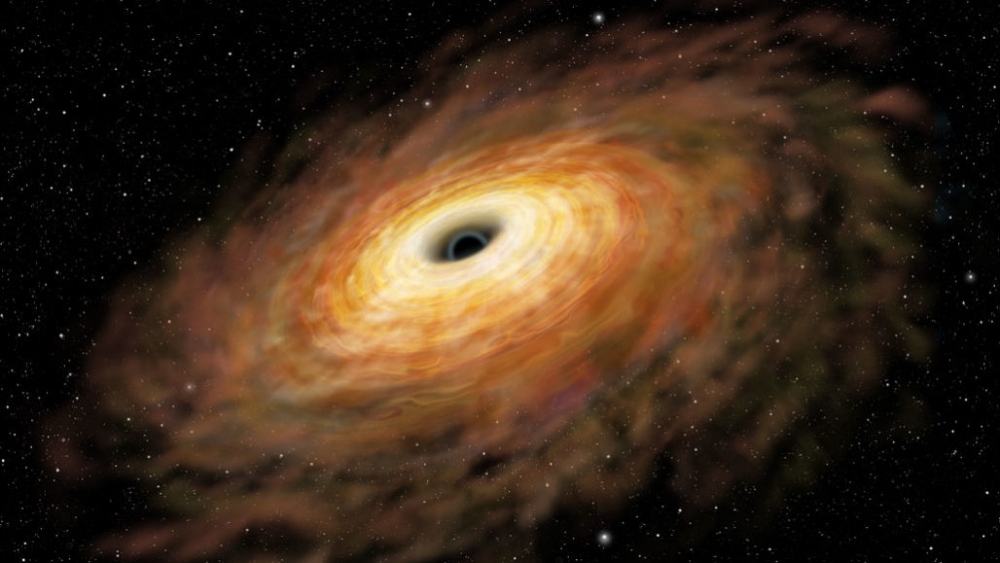A newfound black hole in the Milky Way is weirdly heavy

A black hole (one illustrated) with a mass equal to about 68 suns has been found in the Milky Way, researchers say. That dark mass is much heavier than other similar black holes. (NAOJ)
By Christopher Crockett 28.11.2019
A heavyweight black hole in our galaxy has some explaining to do.
With a mass of about 68 suns, it is far heftier than other stellar-mass black holes (those with masses below about 100 suns) in and around the Milky Way, scientists say. That’s not just a record, it’s also a conundrum. According to theory, black holes in our galaxy that form from the explosive deaths of massive stars — as this one likely did — shouldn’t be heavier than about 25 suns.
The black hole is locked in orbit with a young blue star dubbed LB-1, which sits about 13,800 light-years away in the constellation Gemini, researchers found. Combing through data from the LAMOST telescope in China, Jifeng Liu, an astrophysicist at the Chinese Academy of Sciences in Beijing, and colleagues noticed that LB-1 repeatedly moves toward and away from Earth with great speed — a sign that the star orbits something massive.
With additional observations from telescopes in Hawaii and the Canary Islands, the team mapped out the orbit and deduced that the star gets whipped around by a dark mass roughly 68 times as massive as the sun. Only a black hole fits that description, the team reports November 27 in Nature.
See full text